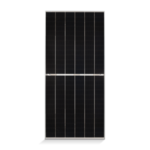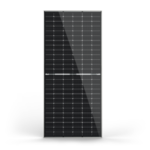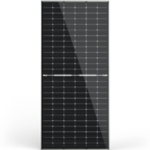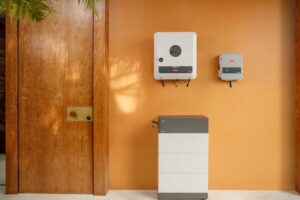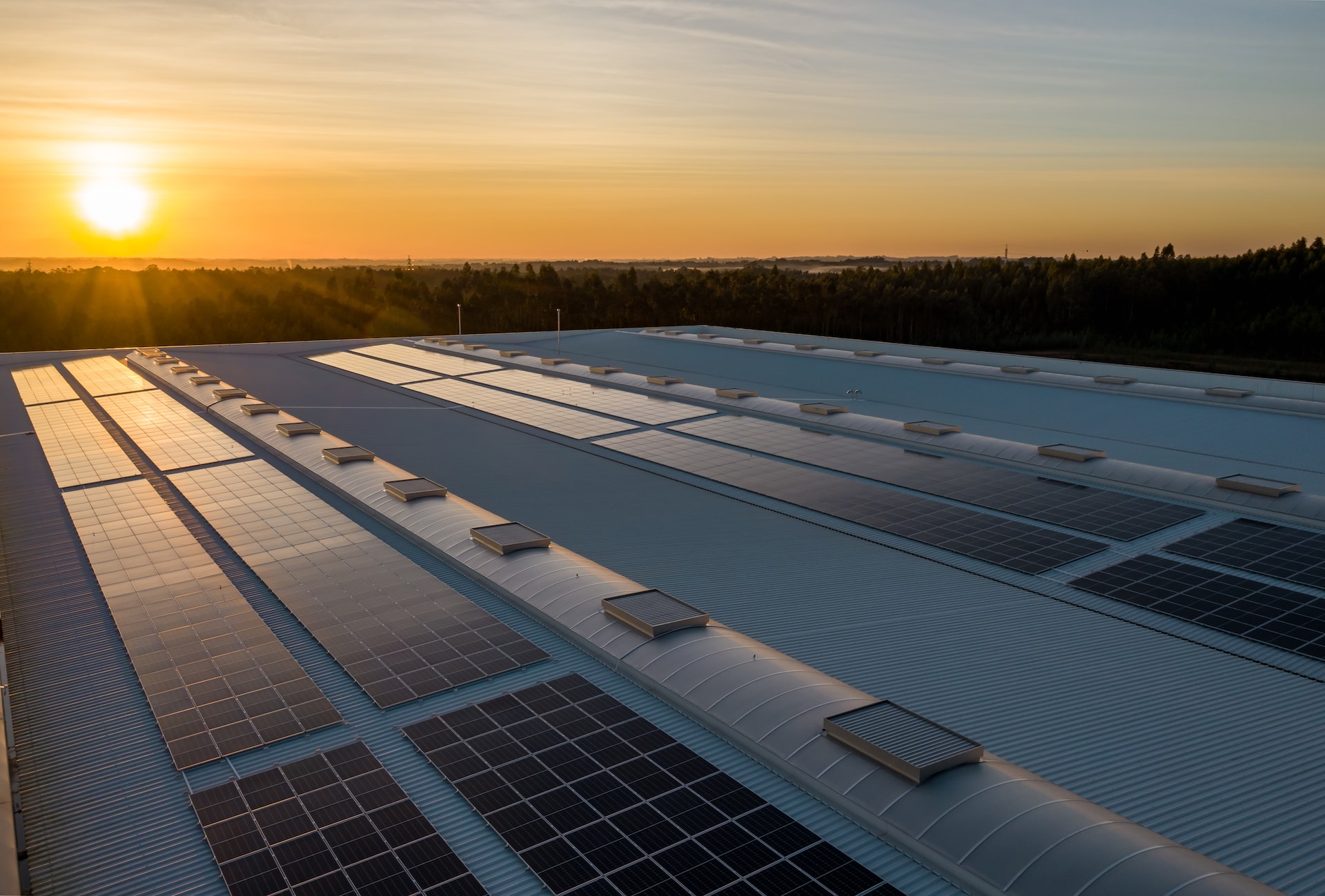
From 2023 with solar module efficiencies ranging from 21-22%, higher-power solar panels (greater than 415 – 440 W) are not better, they’re just bigger, a lot bigger. Oversized solar panels present a heavier, cumbersome build, designed for purposes other than Australian residential rooftops. Therefore, why do companies sell these modules? The answer, marketing hype to have you believe you are buying better—your first red flag.
Contents
Unlike other electrical purchases where a higher-power product for a similar price offers a potential advantage over that of lesser power (speakers, microwave, drill etc.), the same can not be said for higher-power solar panels. With equal efficiency, higher-power solar panels occupy the same rooftop surface area required to fulfil the system generation capacity (e.g. 6.6, 10 or 13 kW) as their lower-power counterparts.
Unfortunately, many consumers perceive high power output as a technology advantage, while deceptive vendors leverage knowledge gaps. There is a purpose for higher-power solar panels, and in most instances, it’s not your residential rooftop.
Discover the savings. The latest Perth Solar Warehouse catalogue delivered to your inbox.
The key differences
Manufacturers add additional rows of cells to make solar panels more appealing for specific project designs. Such a result alters electrical characteristics of the solar panel, affecting the system design. However, the more you stray away from popular residential electrical characteristics, the harder it is to incorporate future technology or maintenance (DC-coupled technology, inverter replacements etc.). Therefore, what may initially be appealing has the potential to become an ongoing hindrance in a residential-type scenario.
Datasheet examples updated from JinkoSolar.com.au 16/01/2023.
In this instance, the technology is not unique. The higher-power solar panel of the same brand will occupy the most surface area per/m2 compared to its lower-power counterparts due to the lowest efficiency. However, the differences would be virtually unnoticeable at only a 0.59% efficiency difference. As the solar panel expands its cell capacity a significant weight increase occurs. Weight increase should be accounted for in the system design, but is often neglected, resulting in adverse downstream issues.
Ultra-high-power solar panels
From 2022/23, leading solar panel manufacturers are building 600 W+ solar modules. One must query, though, why are these ultra-high-powered solar panels not marketed to homeowners if the highest-power solar panels are the most advanced? Deceptive marketers would if they could. Although, the electrical characteristic mismatch and dimensions become too extreme to be a plausible solution.
Datasheet examples updated from JinkoSolar.com.au 16/01/2023.
In the below video, LONGi Solar, the world’s largest manufacturer (BNEF Tier 1, Q4 2022) identify with the Hi-MO 4 range that different module outputs suit specific purposes, with the higher-power solar panels being achieved with an increased cell quantity and better suited towards C&I projects. Same panel, different dimensions with altered electrical characteristics.
Pros of larger solar panels
- Industry: Load bearing compatibilities. The ability to support the additional weight of a higher-power solar panel on the selected mounting location is often a non-issue in industrial scenarios, thanks to reinforced load-bearing capabilities.
- Industry: Reduced captial expenditure. Through minimising the installation time by mounting fewer solar panels. A result that, in turn, can positively affect the capital outlay required. Considering nearly all solar installations are often priced per/watt, such is a less likely case.
- Industry: Reduced associated infrastructure costs. Particular module-level optimisation and monitoring requirements at a reduced cost.
- Residential: Potential design flexibility. In circumstances where selected roof faces are less than accommodating, achieving electrical design flexibility with higher-power solar panels over the equal counterpart of a lower-power solar panel can be advantageous.
- Residential: Certain installation limitations. Specific higher-power solar panel designs can assist where bearer spacings are wider on specific roof types. However, it's important to ensure additional reinforced support is installed to accommodate a more centralised weight distribution.
Non-invasive quoting. Discover the hassle-free solar quotes we’re renowned for.
Cons of larger solar panels
- Residential: Concentrated weight distribution. A concentrated and centralised weight distribution is more likely to upset the structure's integrity over time if installed similarly to the reduced-dimension counterpart.
- Residential: Vendor installation savings. It's often cheaper for the company from which you are purchasing. Unlike industry, residential solar companies without in-house installers often pay sub-contractors per solar panel—fewer panels = reduced installation costs.
- Residential: Limited surface area potential. Or a reduced effectiveness towards space utilisation. Comprised of angled hips and valleys, Australian residential rooftops are often space-limited. Due to increased dimensions, higher-power solar panels present increased challenges for trickier rooflines.
- Residential: Service limitations. The reduced mainstream appeal presents sourcing restrictions. If ever need be, higher-power solar panel variants with similar electrical characteristics are more challenging to source than their lower-power counterparts.
- Residential: Increased structural wind loading. Solar panels, in general, are like sails. The greater the surface area, the more wind you will catch. Even though reduced power format solar panels occupy a similar surface area, the reduced size and increased mounting points reduce the pressure at each fixing location.
- Residential: Potential manhandling degradation. At the time of installation, the handling of solar panels is critical. The lighter physical nature of a reduced frame format solar panel ensures manhandling stress is lessened. If affected, these stressors will present as snail trails/microcracks and, even hotspots. Manhandling stress reduces the manufacturers warranty to 0 years.
What is the cost difference?
Nil. Solar panels form part of a system and are priced on a per/watt basis. Therefore, there is often no cost difference at a wholesale level with a like-for-like increased vs reduced dimension solar panel format incorporated a system. It is a misconception that you are receiving better solar panels due to an increased power class.
Retailers will always buy solar panels wholesale at a per/watt purchase price. The cost is almost always identical, as the efficiency and technology define the solar panel, not the power output.
Interestingly, solar panel higher-power output deception is nothing new. Pre-2020, marketers would leverage the higher-power qualities of 72-cell solar panels. Even though a lot has changed since, so too have the associated components to adapt to the change. 72-cell solar panels were specifically designed for C&I installation types and high-power inverters, with 60-cell solar panels better suited to the residential market and residential-specific inverter technologies.
From 2023, with most new solar panels available in Australia ranging from 21-22% module efficiency, the ideal residential solar panel with mainstream electrical characteristics for your future flexibility currently ranges between 400 to 440 W. As REC Solar would suggest, seek “Better, not Bigger”.
Need assistance matching the ideal solar panel with your installation type, less the misleading spin? Perth Solar Warehouse Sales Support can assist with Perth’s most extensive online range of high-grade solar panel technology.

